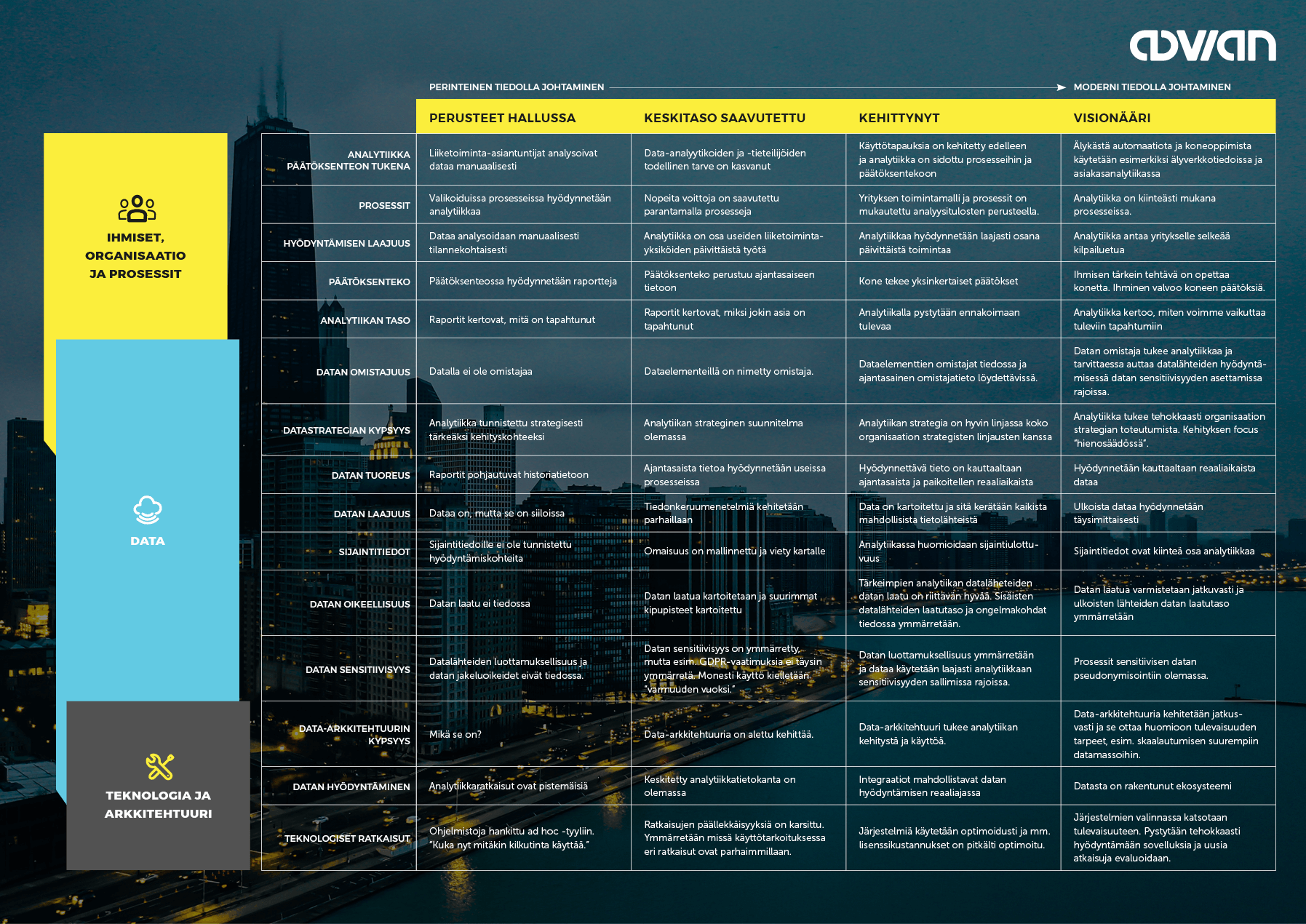The possibilities for Edge AI are almost unlimited – applications vary from smartwatches to production lines and from logistics to smart buildings and cities. What is Edge AI and why should you care?
Simply put, Edge AI is a combination of Edge Computing and Artificial Intelligence. AI algorithms are processed locally on devices, and the algorithms utilize the data generated by the devices themselves. The device can perform analysis and make independent decisions in a matter of milliseconds without having to connect to the Internet nor the cloud.
👉 Edge computing
Samu wrote about edge computing earlier on Advian’s blog. Edge computing consists of multiple techniques that bring data collection, analysis, and processing to the edge of the network. This means that the computing power and data storage are located where the actual data collection happens. What is meant by the network edge? Well, depends on the use case - it could be a mobile phone, IoT-device, self-driving car or even a cell tower.👉 Artificial Intelligence
Broadly speaking, in artificial intelligence a machine mimics human reasoning: problem-solving or even understanding languages. Artificial intelligence can be seen as advanced analytics, (often based on machine learning) combined with automation. This pragmatic definition covers all current AI applications.

Therefore, you can consider Edge AI as analytics that takes place locally and utilizes advanced analytics methods (such as machine learning and artificial intelligence), edge computing techniques (such as machine vision, video analytics, and sensor fusion) and requires suitable hardware and electronics (which enable edge computing). In addition, location intelligence methods are often required to make Edge AI happen.
Edge AI devices include smart speakers, phones, tablets and laptops, robots, self-driven cars, drones, and surveillance cameras that use video analytics.
Although most of the analysis and decisions made by machines already happen on the edge, the greatest benefits are obtained when the findings produced by the devices are linked to business processes. Therefore, modern data platforms, capable of handling large amounts of location and streaming data, are also needed to enable real-time computing.
Why is Edge AI gaining more attention day by day?
The Edge computing market is expected to grow at a brisk billion pace in the coming years.
As we discussed in our previous blog, compared to cloud-based analysis, edge computing enables the near real-time analysis of much larger amounts of data, eliminates latency, and reduces the need for data transfer.
When edge computing is combined with artificial intelligence, we get an unbeatable combo. Edge AI speeds up decision-making, makes data processing more secure, improves the user experience with hyper-personalization, and lowers costs — for example, by speeding up processes and reducing the energy consumption of devices.
An example would be a hand-held tool in a factory, embedded with a microprocessor that utilizes Edge AI software. The tool's battery lasts longer when data doesn't have to be sent to the cloud. The tool collects, processes, and analyses data in real time, and after the work day, the tool sends the data to the cloud for later analysis. A tool embedded with AI could for example turn itself off in the event of an emergency. The manufacturer, on the other hand, receives valuable information about how their products are working and can utilize this information in further development.
Industries that will gain exceptionally big benefits from Edge AI are transportation (such as autonomous vehicles and machinery) and manufacturing (for example in preventive maintenance, quality control, automation of production lines, and safety monitoring through video analytics.)
What does the future look like? Or are we already living it?
In the last couple of decades, we have moved from data centers to the cloud and from cloud to the edge of networks.
Research giant Gartner predicts that by 2025, the proportion of enterprise generated data that will be analysed outside of traditional data centers or in the cloud will rise from today’s 10 percent up to as much as 75 percent.
Edge AI is likely to alleviate many of the problems that current centralized data architectures cannot solve. Edge computing already follows the principles of federated learning, but most of the current methods of machine learning and artificial intelligence still work on the assumption that computing is centralized.
As volumes grow, new innovative ways for efficient analysis and data processing are needed. Last year, the International Data Corporation (IDC) took a peek into the crystal ball and predicted that there will be 41.6 billion connected IoT devices generating 79.4 zettabytes of data in 2025. Much of this is produced by various applications designed for camera surveillance. So much data is generated that post analysis is not sufficient - real-time video analytics is needed.
Wonder what your business could achieve
with Edge AI?
Let's have a talk! Book a free 30 minute discussion with our expert below 👇
Topics: Ai, Advanced Analytics, Machine Learning, Edge AI














